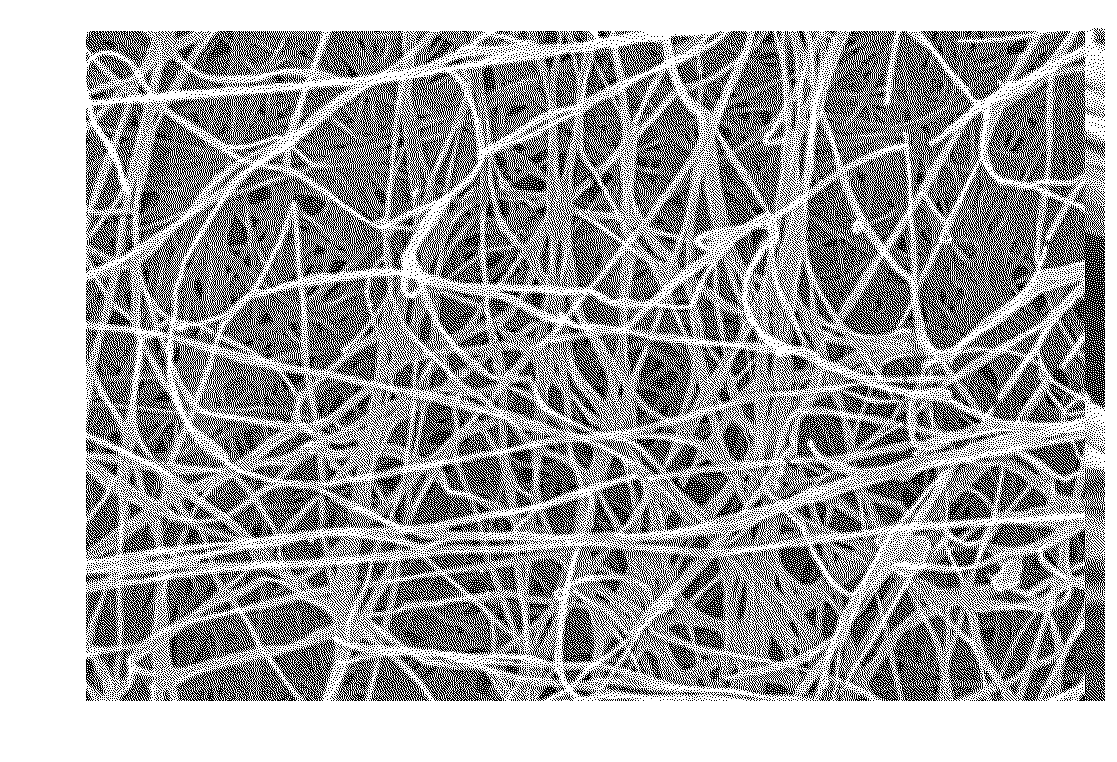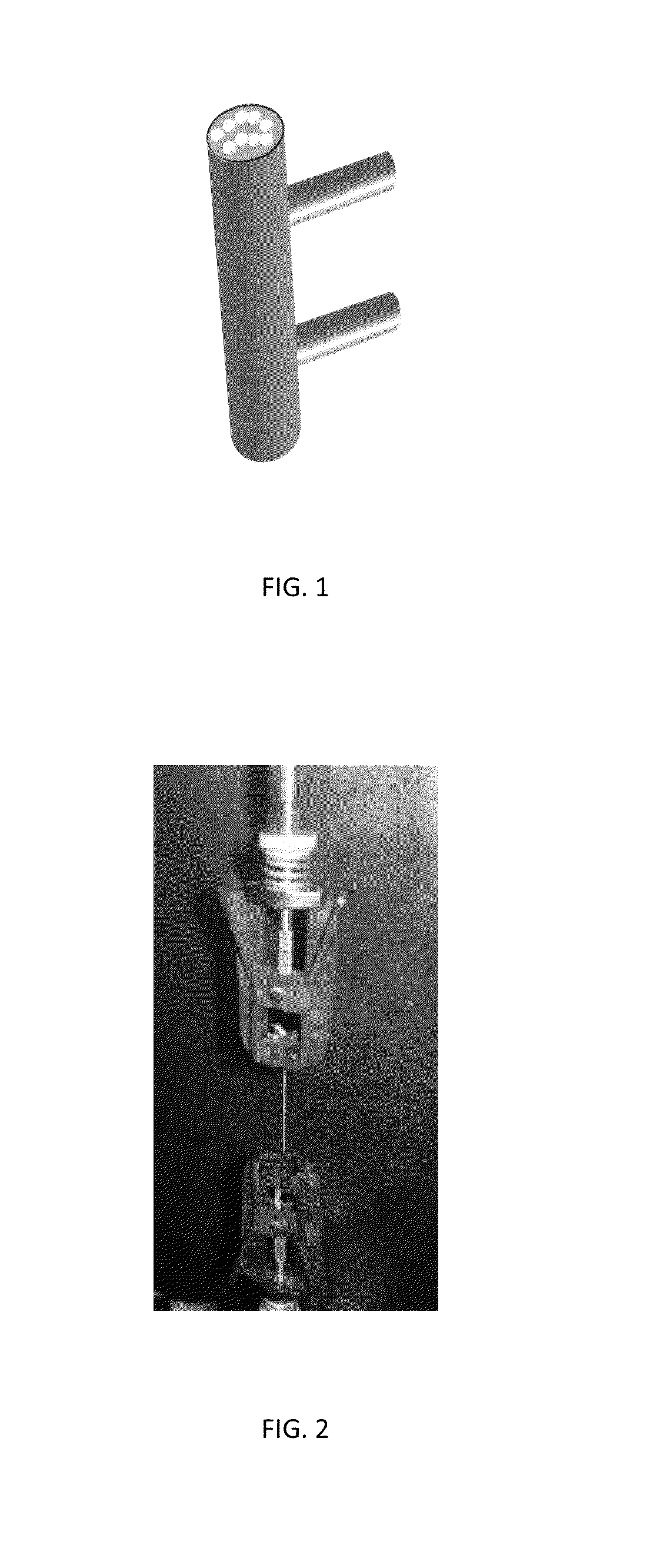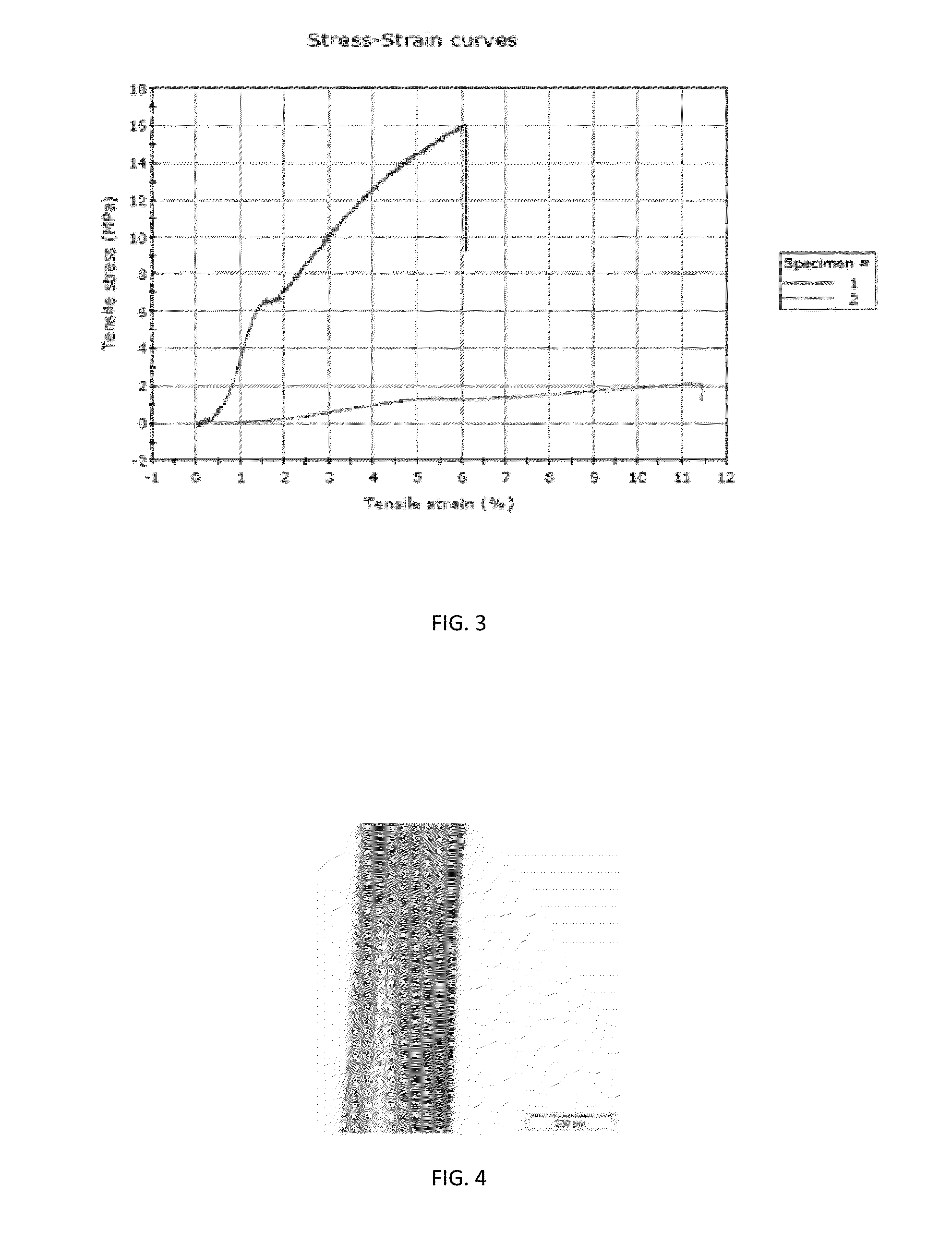Biosynthetic functional cellulose (BC) fibers as surgical sutures and reinforcement of implants and growing tissue
a technology cellulose fibers, which is applied in the field of biosynthetic functional cellulose (bc) fibers, can solve the problems of lack of control of size and shape, material absorbs a small amount of water, and is therefore not attractive as biomaterial, etc., to achieve the effect of encouraging and/or facilitating tissue growth
- Summary
- Abstract
- Description
- Claims
- Application Information
AI Technical Summary
Benefits of technology
Problems solved by technology
Method used
Image
Examples
example 1
Production of BC Hydrogel Fiber
[0065]A representative production system for the controlled growth of BC hydrogel fiber is shown schematically in FIG. 1. The system comprises a cartridge containing sterile silicone tubing. Silicone tubing (PDMS) from Lebo Sweden, with diameter of 1.4 mm and a Shore A hardness of 50 were used in this example. Any type of silicone rubber tubing can be used. Characteristics of the tubing can include that it is generally non-reactive, stable, and resistant to extreme environments and temperatures from −120° C. to +300° C. Polydimethylsiloxane (PDMS) is a preferred type of tubing that can be used according to methods of the invention. Mechanical properties of the rubber tubing can include: a Shore A Hardness in the range of about 3-90, such as from about 5-10, 20-80, or about 30-70, or about 40-60, or about 15-65, or about 25-45, or about 35-55, or any hardness value in this range; a tensile strength of the material of the rubber tubing can be in the rang...
example 2
Conversion of BC Hydrogel Into Robust BC Fiber
[0068]The BC fiber hydrogel produced in Example 1 was washed with 0.1 m alkali solution for 1 hour at 60 degrees Celsius and then washed several times with distilled water. The hydrogel fiber was then removed from the silicone tubing and stretched using a tensile testing machine (FIG. 2). Different strain rates were evaluated and it was found that 10% stretching imparted the BC fibers with optimal mechanical properties. It is important to keep BC hydrogel wet upon stretching since water acts as plasticizer and allows nano-cellulose to align and achieve orientation in the direction of stretching. In preferred embodiments the hydrogel is slowly dewatered upon stretching to yield robust BC fiber as shown in FIG. 4.
[0069]The BC fibers were evaluated for applications as surgical sutures. The most important property of surgical sutures are the mechanical properties. Mechanical properties were evaluated in stress-strain mode and the strength wa...
example 3
Use of BC Fibers as Reinforcement of BC Meniscus Implant
[0070]The BC fibers with a diameter of 200 microns produced in Example 1 and converted into robust fibers as described in Example 2 were sterilized in autoclave and evaluated as reinforcement of BC meniscus implant. The BC fibers were placed in meniscus bioreactor in circumferential direction and BC meniscus was grown in such bioreactor using 3D Bioprinting process. After 2-24 hours, when a confluent layer of BC was produced in the meniscus form, addition of a suitable medium was started at the rate which was matching BC production in the mold. After 5 days of such culture the robust BC meniscus in the shape of a patient's injured meniscus was produced. The BC meniscus was removed from the mold, washed in 0.1 m NaOH solution at 60 degree Celsius for 48 hours and then washed several days with DI water. After sterilization in an autoclave BC meniscus implant was ready for use as implant. It was found that the BC fibers were very ...
PUM
| Property | Measurement | Unit |
|---|---|---|
| diameter | aaaaa | aaaaa |
| thickness | aaaaa | aaaaa |
| diameter | aaaaa | aaaaa |
Abstract
Description
Claims
Application Information
 Login to View More
Login to View More - R&D
- Intellectual Property
- Life Sciences
- Materials
- Tech Scout
- Unparalleled Data Quality
- Higher Quality Content
- 60% Fewer Hallucinations
Browse by: Latest US Patents, China's latest patents, Technical Efficacy Thesaurus, Application Domain, Technology Topic, Popular Technical Reports.
© 2025 PatSnap. All rights reserved.Legal|Privacy policy|Modern Slavery Act Transparency Statement|Sitemap|About US| Contact US: help@patsnap.com



